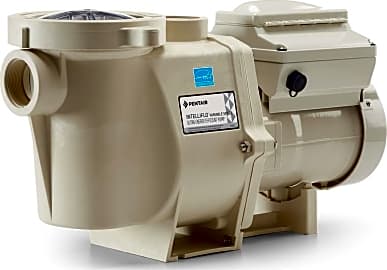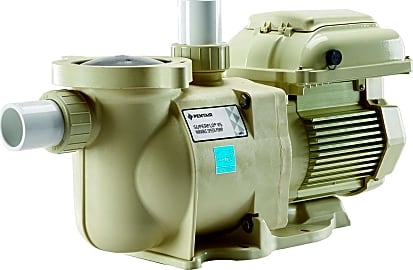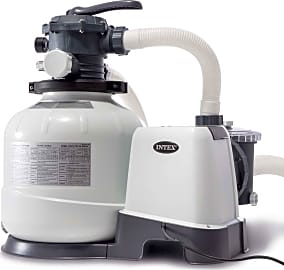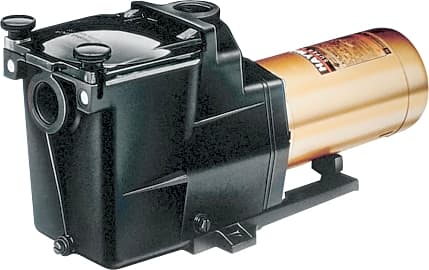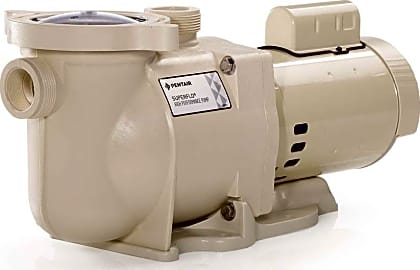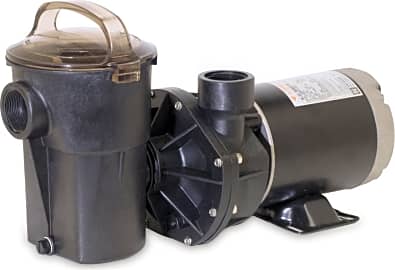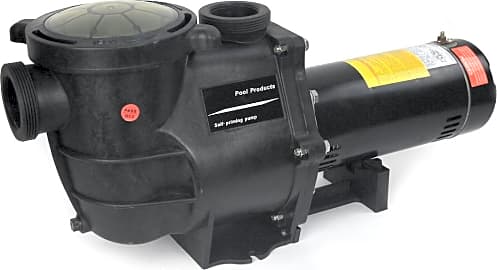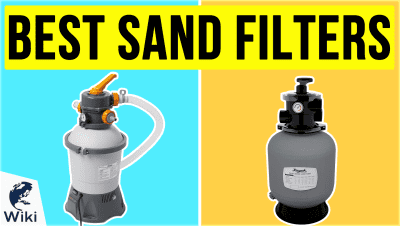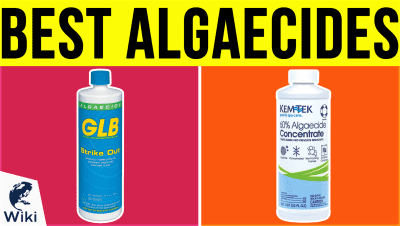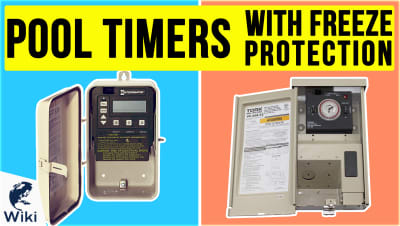The 10 Best Pool Pumps

This wiki has been updated 44 times since it was first published in February of 2015. Summer is so much better when you have a swimming pool — unless it’s a dirty, algae-filled swamp spoiling your backyard beauty and fun. Make sure your personal oasis remains clean for whenever you'd like a dip, with one of these top-rated pumps. We've chosen options for both above- and in-ground models, including ones you can install yourself, though we don't recommend that in most cases. When users buy our independently chosen editorial choices, we may earn commissions to help fund the Wiki.
Editor's Notes
July 16, 2020:
It was a fairly smooth round of updates, with our only new omission being the Harris ProForce H152730, which was removed due to availability issues. In its place, we added the Hayward TriStar VS — a 2.7-horsepower, variable-speed unit with eight speed settings that’s recommended for large pools.
A few things to think about for this category:
Size: How big of a motor do you need in this unit? More than anything, the answer to that question depends on the size of your pool. A rule that’s commonly used is to select a pump that can turnover (fully circulate) your pool water in eight to 10 hours. With that in mind, recognizing that the efficiencies of these pumps can vary dramatically, skip the horsepower rating and go straight for each unit’s listed flow rate to give you a sense of how much water it will move.
If you have a 40,000-liter pool, and you want to turnover your water every eight hours, that means you’ll need to pump 5,000 liters an hour, or 83 liters a minute, which translates roughly to a 22-gallons-per-minute minimum flow rate for your pump. Once you’ve picked your pump, you can size your pool filter according to your pump’s flow rate, making sure that it’s a lesser number than your future filter's design flow rate.
Speeds: How many do you need? Well, if budget’s a major factor for this purchase, then I’ll be pretty quick to recommend a single-speed unit like the Hayward Super Pump. The induction motors in typical single-speed pumps aren’t very efficient, and they can be very noisy, but because they’re relatively affordable up front, they still dominate the market. Notably, a two-speed version of the Hayward Super Pump is also available, which still uses an induction motor, but allows users the luxury of turning the speed down for routine usage, reducing noise pollution and cutting back on energy consumption by up to 50%, while still leaving you with the option of increasing the speed to vacuum or introduce some algaecide in a hurry.
However, if you can afford their initial purchase price, which can be quite steep, then a variable speed pump – like the Hayward TriStar VS, Pentair SuperFlo VS 342001 or Hayward MaxFlo VS SP2303VSP – is an energy-efficient choice that can last for years and, especially in areas with long pool seasons and lofty utility costs, pay for itself in the long run, with reductions in energy consumption of up to 90 percent. The permanent magnet motors in these units also tend to run quietly.
Control: Basic pool pumps – and again, pumps that tend to dominate the market, due to their up-front cost efficiency – tend to have minimal circuitry and offer users very little control. Bottom-end Hayward pumps, like the one that’s been circulating my pool faithfully for the past seven swimming seasons, don’t even have a power switch. If you want to implement any sort of automation with a pump like this, you’ll need to introduce a pool timer to its circuit. Or – for plug-and-play models like the Intex Krystal Clear – perhaps connect it to a smart outlet.
However, there are several, slick, high-end options in this category with on-board controls that allow you to lay out custom schedules with programmable speeds, eliminating the need for manual pump monitoring or separate automation hardware. The Hayward TriStar VS and Hayward MaxFlo VS SP2303VSP feature a useful control panel that can be mounted in one of four directions on the unit or, with the help of a separately-purchased mounting kit, be installed at a convenient location on an adjacent wall. The CPU on the Pentair IntelliFlo 011018 even runs helpful diagnostic tests, to help improve the working life of the unit.
May 09, 2019:
The pump is the mainstay of any pool cleaning system. If your water cannot be properly circulated through the filter and strainer basket, it won't stay crystal clear for very long. Because of this, it is important to buy a dependable unit. These days, the most efficient options are variable speed models like the Hayward MaxFlo VS SP2303VSP, Pentair IntelliFlo 011018, and Pentair 342001 SuperFlo VS. They are designed to use up to 90 percent less electricity than comparable single- or dual-speed models. While they do require a bigger investment up front, they should save you money in the long run. For those who just want ease of use, dependability, and a more budget-friendly purchase, a single- or dual-speed model can still be a smart choice. If you fall into this category of people, we have included the Hayward Super Pump and Pentair 340038 SuperFlo. While Pentair and Hayward may be the most well-known and respected pool pump manufacturers, that doesn't mean there aren't some decent contenders from other companies. For example, Intex Krystal Clear combines a pump with a sand filter, which are often more effective than cartridge filters. Plus, even their largest model comes for a budget-friendly price. Speaking of things easy on the wallet, the Harris ProForce H1572730 and Harris H1572748 ProForce, both of which are 1.5-horsepower models, deserve mention. The former is designed for above-ground pools and the latter for in-ground.
Special Honors
Hayward VS Omni With models available to easily replace your existing variable-speed TriStar, Super Pump or MaxFlo, Hayward's VS Omni line might be the easiest way to fully automate your pool space. Not only will you now be able to control your pump from the included control panel or your smartphone, but you can also connect other loads like pool lighting and heaters. hayward-pool.com
Why Do You Need A Pool Pump?
The right pool pump is not only essential to your pool's cleanliness, it is also essential to your health.
Are you installing a new in-ground or above-ground pool? Are you remodeling your pool and getting it ready for summer? Do you live in a warm climate or have an indoor pool that you use year-round? If so, you are going to need the best possible pump to keep your pool fresh, clean, and ready for swimming. If you're gearing up for summer, you are probably ready to take a dip and cool off in your pool.
A pool pump is intended to keep your pool clean and ready for swimming. While you will likely need a pool filter and something to strain the bigger pieces, the pool pump will filter large pieces from the water and keep it flowing smoothly at all hours to prevent stagnation and prepare the water for a cool, refreshing dip at any time of day.
This device also uses a simple process to ensure that your pool water is properly filtered. Pool pumps include an internal basket strainer that catches debris that is pulled into the pump. The water flows into the pump, through the basket, and pushes the clean, filtered water back into the pool.
If you have a pool, a pool pump is an absolute necessity. Not only does it remove debris from the pool, but it allows the chemicals to work efficiently to prevent algae and other harmful bacteria that can grow in stagnant, still water. The right pool pump is not only essential to your pool's cleanliness, it is also essential to your health.
What To Look For In Your Pool Pump
There are several important factors you need to consider before purchasing a pool pump; not just any pump will do. You need one that will work with your particular system and accommodate the size of your pool.
Flow rate should be your first consideration. It refers to the number of gallons of water that can be moved in one minute. The bigger your pool, the higher the flow rate of your pool pump should be.
When shopping for a pool pump, try to find one that is energy efficient.
Head is a number that is specific to your pool. It is defined as the flow resistance present in your pool and its plumbing system. The length of your pool, the amount of water it holds, the heater, the chemical feeder, and other factors that make your pool system, determine this number.
The pool pump that you choose should be compatible with both your pool's needed flow rate and head. Many pumps now come equipped with multiple speed settings to adjust with very little effort. If you choose to purchase a single-speed pool pump, read the product description carefully or contact the manufacturer to ensure that you are getting exactly what you need.
When shopping for a pool pump, try to find one that is energy efficient. This is especially important if you live in a warm climate. This means that you will be using your pool ten to twelve months out of the year requiring your pool pump to run constantly. Another way to conserve energy is to purchase a pump with a timer so it only runs for a certain number of hours each day.
Choose a pump that is long-lasting and stands up to all types of weather. If you have an outdoor pool, the pump is bound to endure some wear and tear. Pumps with a built-in control panel are especially helpful so you can adjust the speed when necessary.
The right pool pump will be affordable, easy to install and operate, and work seamlessly with your pool's needed flow rate and head. Remember that it has to work for several months out of the year, so it needs to be proven to be reliable and efficient.
A Brief History of the Pool Pump
Man has been building and using pools for health and recreation for thousands of years. Historians believe that the first recorded manmade pool was The Great Bath in acient Pakistan. It was build over 5,000 years ago, and historians believe that it was used for religious purposes.
They created heated pools, and it seems that they even tried to use silver plates to sanitize the water.
The Greeks created the first public bath houses called Paleastras. These were invented and built between 800 B.C.E. and 600 B.C.E. Plato, the famous Greek philospher, strongly encouraged parents and educators to teach their children to swim. He put as much stock in this knowledge as he did in academic studies.
The Romans are credited as the true innovators because they built public bathhouses across major cities. They created heated pools, and it seems that they even tried to use silver plates to sanitize the water.
The 18th century saw a rise in athletics and swim competitions begun and encouraged by Great Britain. Pools for human use became popular once again, and has yet to die out.
The 20th century in the United States saw a boom in technological advancement which, in turn, changed the way public pools were built and maintained. Pool owners began chlorinating their pools and using rapid-sand filtration methods to avoid having to drain the water after each day's use.
These filtration systems made pools much easier to use and encouraged the boom in popularity among the middle class during and after World War II. While most pools around this time were in-ground, it wasn't long before Doughboy Recreational created and sold above-ground pool kits that were more affordable, and allowed even some lower middle class homes to own their own backyard swimming pool. Pool pumps quickly became a necessity rather than a luxury.


